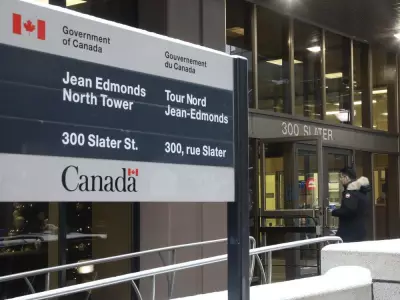
The Canadian federal government is preparing for significant changes to its workforce as Budget 2025 outlines plans for substantial public service reductions. These proposed cuts represent one of the most dramatic shifts in federal employment strategy in recent years, potentially affecting thousands of government workers across the country.
The Scale of Proposed Reductions
While specific numbers remain under discussion, government sources indicate the planned reductions could impact multiple departments and agencies. The cuts are expected to be implemented through a combination of attrition, voluntary departure programs, and potential targeted layoffs.
Officials emphasize that the approach will focus on "strategic realignment" rather than across-the-board cuts, aiming to preserve essential services while eliminating redundant positions and streamlining operations.
Budget Pressures Drive Workforce Changes
The driving force behind these workforce reductions stems from ongoing budgetary constraints and the government's commitment to fiscal responsibility. With rising operational costs and changing service delivery models, the Treasury Board has been tasked with identifying areas where efficiency gains can be achieved without compromising critical public services.
Multiple factors are influencing this decision:
- Increasing pressure to reduce government spending
- The shift toward digital service delivery
- Changing demographic patterns in service needs
- Post-pandemic restructuring of work arrangements
Potential Impact on Government Operations
While the government assures that essential services will remain unaffected, some experts warn that significant workforce reductions could lead to:
- Longer processing times for certain applications and services
- Consolidation of regional offices and service centers
- Increased reliance on digital self-service options
- Potential restructuring of departmental responsibilities
Employee Concerns and Transition Support
Public service unions have expressed serious concerns about the potential impact on their members. Key worries include job security, workplace morale, and the government's ability to maintain service quality with a reduced workforce.
The government has indicated that transition support measures are being developed, potentially including:
- Early retirement incentives for eligible employees
- Retraining programs for affected workers
- Priority placement systems for internal transfers
- Career transition services for those facing layoffs
Looking Ahead: Implementation Timeline
The proposed workforce reductions would be phased in gradually following the budget's passage. Most changes are expected to occur over a 24-36 month period, allowing for careful planning and minimal disruption to government operations.
Departmental consultations are ongoing, with final implementation plans to be developed in coordination with affected ministries and employee representatives. The government has committed to providing regular updates as the process moves forward.
As Budget 2025 moves toward parliamentary approval, all eyes remain on how these proposed public service changes will ultimately take shape and what they will mean for both government workers and the Canadians who rely on their services.





